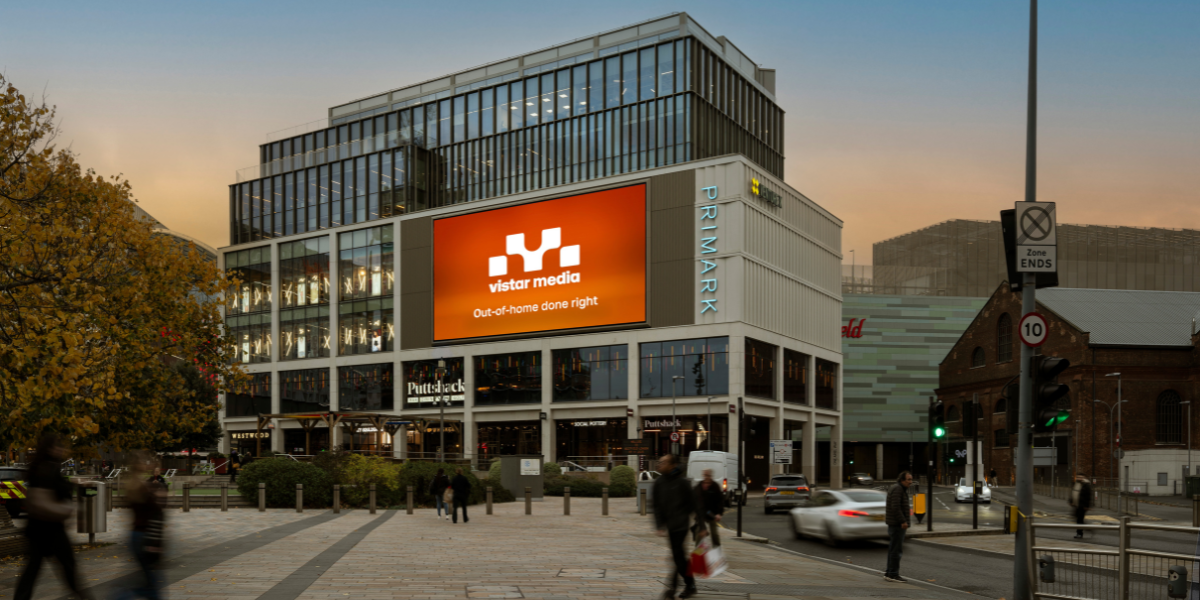.png)
We recently sat down with Ben Elliott, Senior Manager of Inventory Partnerships at StackAdapt, to discuss StackAdapt’s strategy behind adding digital out-of-home (DOOH) as an offering for platform users, as well as what’s in store for the market as a whole. Here’s an excerpt from our conversation:
Q: Tell us about your background and your current role at StackAdapt.
A: I spent almost five years working at SpotX, where I focused on connected TV (CTV). Here at StackAdapt, I am managing emerging channels and also working on advanced TV and CTV. My team here at StackAdapt focuses on staying on top of emerging industry trends, and ensuring that StackAdapt provides our clients with a robust platform offering that gives them the most valuable solutions that are out on the market right now.
Q: Why did StackAdapt decide to add DOOH as an offering for platform users?
A: Lockdowns throughout 2020 led to a slowing of spend on DOOH, with spend increasing only by 1.6% throughout the year. But in 2021, we started to see a rebound. This was in part because DOOH has advanced significantly.
Traditional DOOH didn’t allow marketers to easily buy and track ad spaces. But thanks to programmatic, DOOH is now scalable, it allows advertisers to purchase ad spaces relevant to their market, and creatives can easily be changed.
We’ve added DOOH to StackAdapt’s channel offering because advertisers need a programmatic advertising platform that allows them to reach their audience at each point in the consumer journey. DOOH provides an opportunity to reach a user that is out of the home, and in an environment where they can make a physical purchase. DOOH can also increase brand awareness through mobile retargeting solutions.
Q: How have you seen DOOH evolve, and what are the current trends you’re seeing in the market?
A: DOOH used to be seen as a challenging channel, but it’s now becoming more accessible. The ease of running DOOH campaigns with a programmatic advertising platform makes execution more streamlined.
The technology that delivers DOOH advertising on outdoor screens has also improved. We now have higher screen quality, and interactive screens that are increasing the visibility and effectiveness of DOOH ads. More modern audience measurement solutions continue to emerge for DOOH as well, which makes it easier to measure the impact of your DOOH campaigns.
Aside from technological advancements, DOOH is bouncing back because pandemic restrictions are lifting. Consumers are returning to travel, in-store shopping, and daily commuting, which results in more visibility for this channel.
Q: What can media owners do to make their networks more attractive to you and your buyers?
A: Offering unique placements and solutions for audience-based buying is a great way to draw buyers. And, of course, ease of activation. You want the onboarding process to be simple and smooth so that buyers can get DOOH up and running fast. It also always helps to have a team available to support buyers.
The ability to see what media has been bought, where that media was placed, and how much it was bought for will also attract media buyers. Having access to inventory lists and domain reporting available on demand, along with metrics associated with those domains, provides transparency that media buyers can leverage to analyze the impact of their campaigns.
Q: What’s in store for the future of DOOH?
A: With pandemic restrictions easing, we’re seeing the return of in-store shopping. Paired with DOOH technology becoming more advanced, with elevated tech capabilities like dynamic digital content, it’s expected this channel will become increasingly relevant. In fact, the DOOH market size is projected to reach $54.83 billion USD by 2030, growing at a CAGR of 11.6% from 2021 to 2030.



